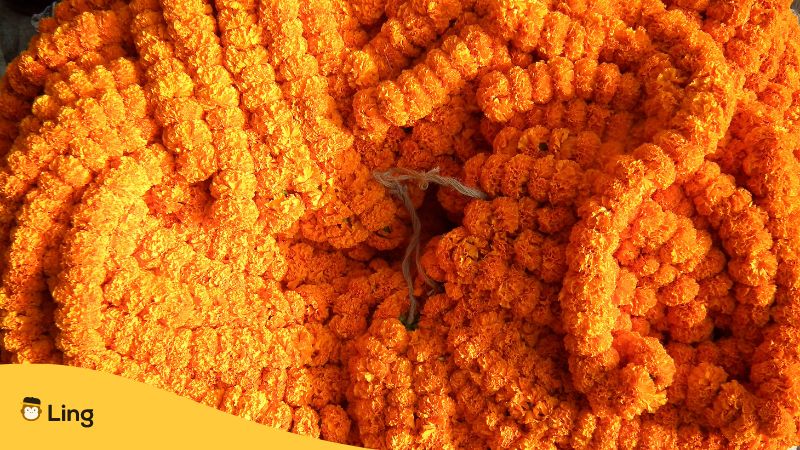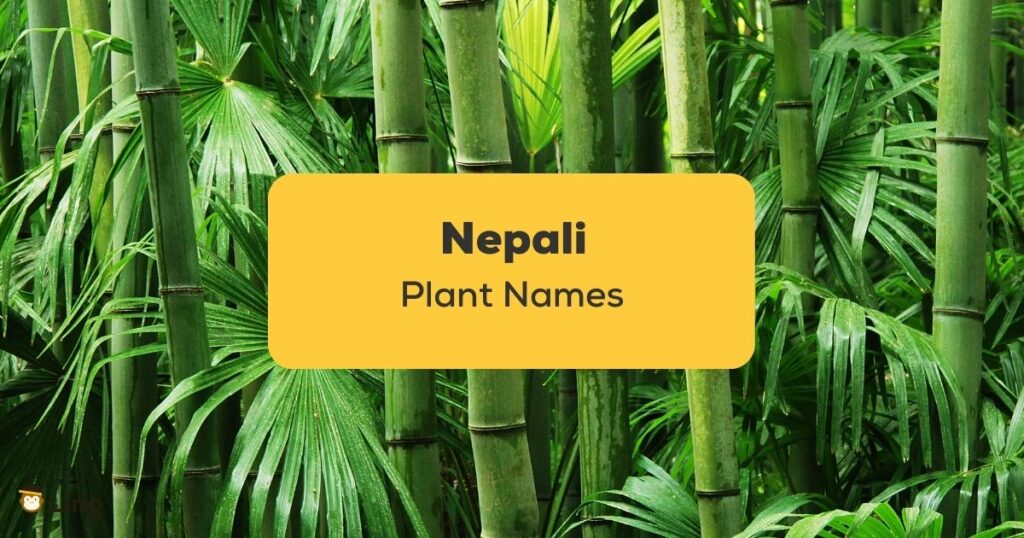Plants or बिरुवा Biruva hold great significance in Nepali culture, playing a vital role in the religious, traditional, and ecological aspects of Nepali society. Today, we will explore some important plant names in Nepal and their significance to the Nepali people. Let’s begin!
Nepal, a land of remarkable biodiversity, is adorned with a splendid array of plants that carry deep cultural and traditional significance. The value assigned to these plants may vary across regions and individual beliefs, but their presence forms an inseparable bond with the Nepali way of life, spirituality, and environmental preservation.
At the heart of Nepal’s botanical heritage stands the Rhododendron arboreum, affectionately known as Lali Gurans or Gurans in the local language. This national plant holds immense cultural and ecological importance in Nepal. Its resplendent blossoms symbolize the nation’s natural splendor and are intricately woven into its very identity. Lali Gurans take center stage in vibrant cultural celebrations, festivals, and artistic creations, proudly representing Nepal as its national plant.
Today, we will embark on a journey to explore a few select examples of plants that have become synonymous with Nepali culture. However, it is essential to note that Nepal’s abundant biodiversity encompasses countless other plants that hold cultural, medicinal, and ecological value, treasured by diverse ethnic communities across the country.

Nepali Plant Names & Their Importance
Here are a few ways in which plants are important in the Nepali language and culture:
Religious Significance
Plants are often associated with religious rituals and festivals in Nepal. For example, during Hindu festivals like Dashain and Tihar, specific plants like the Jamara (barley shoots) and marigold flowers hold special significance and are used in ceremonial offerings and decorations.
Medicinal And Ayurvedic Uses
Nepal has a rich tradition of herbal medicine and Ayurveda. Various plants and herbs are valued for their medicinal properties and are used in traditional healing practices. These plants are believed to possess healing properties and are utilized in remedies for common ailments.
Environmental Conservation
Nepal has known the world over for its diverse and fragile ecosystems, including the Himalayas, and the rich biodiversity found within the country. Plants are vital for maintaining ecological balance, preventing soil erosion, conserving water, and preserving natural habitats. Initiatives for forest conservation and tree planting campaigns are actively promoted to protect the environment and preserve Nepal’s natural beauty.
Traditional Practices
In rural areas of Nepal, plants hold cultural significance and are integral to traditional practices. For example, certain plants are used for dyeing textiles, creating handicrafts, or making traditional musical instruments. These practices connect communities with their cultural heritage and promote sustainable use of plant resources.
Agricultural Livelihoods
Agriculture forms the backbone of Nepal’s economy, with a significant portion of the population engaged in farming and subsistence agriculture. Plants, particularly food crops like rice, wheat, maize, and various vegetables, are essential for food security and livelihoods across the country.

Common Types Of Nepali Plant Names
1. Marigold (गाँठो Genda): Marigold flowers are widely used in religious and cultural ceremonies. They are considered auspicious and symbolize purity and devotion. Marigolds are used to make garlands, decorate temples, and adorn homes during festivals. Their bright yellow and orange hues add a festive charm and color to the celebrations.
2. Rice (धन Dhan): As a staple food crop, rice holds immense importance in Nepali culture. It is grown extensively across the country, and rice cultivation is deeply ingrained in traditional agricultural practices. Rice plays a central role in festivals, rituals, and feasts, symbolizing abundance, prosperity, and sustenance.
3. Barley (धन Jau): Barley, particularly in its sprouted form called Jamara, is an essential component of the Dashain festival in Nepal. During this festival, people cultivate barley seeds in small pots, and the sprouts (Jamara) are later used as sacred offerings and blessings. The Jamara represents the victory of good over evil in life and is exchanged among family members as a symbol of love and good wishes.
4. Banyan Tree (बर पिपल Bar Pipal): Banyan trees, commonly known as Bar Pipal in Nepal, hold religious significance in Hindu and Buddhist traditions. They are considered sacred and are often found near temples and religious sites. Devotees tie prayer flags or sacred threads around their trunks and offer prayers for good fortune, protection, and spiritual blessings.
5. Bamboo (बाँस Bans): Bamboo is a versatile plant found abundantly in Nepal. It is widely used in construction, handicrafts, and traditional musical instruments like Madal and Dholak. Bamboo also has cultural significance and is used in the construction of traditional houses, fences, and various household items.
Tips To Learn Nepali Plant Names
Understanding plant names as a foreigner in Nepal can be challenging, especially if you are unfamiliar with the local language and botanical terms. Here are a few translation tips to help you navigate plant names and enhance your understanding:
- Learn Basic Nepali Plant Names: You have already started this process! Focus on commonly encountered plants or those that interest people around you.
- Seek Local Assistance: Engage with locals who have knowledge about plants, maybe in a guided nature walk. They can help you identify and understand various plant species, and share interesting facts.
- Participate in Workshops or Botanical Tours: Look out for workshops, seminars, or botanical tours organized by local organizations or botanical institutions. They are quite fascinating!

Nepali With Ling
It is quite understandable that just this information is not enough for you to set out and explore the fauna and flora of Nepal. You need more vocabulary for conversations, greetings and to get around.
How about a travel buddy? Try the Ling app! This gamified app is ideal for you to learn the necessary Nepali you need to get going without Google! Just by using the app for 10 minutes a day, you’ll get to work on your speaking skills and accent and make some Nepali friends. Visit the page today or download the app from the App Store or Google Play Store. This time around, you won’t need to read a book to learn Nepali! Try Ling now instead!



















